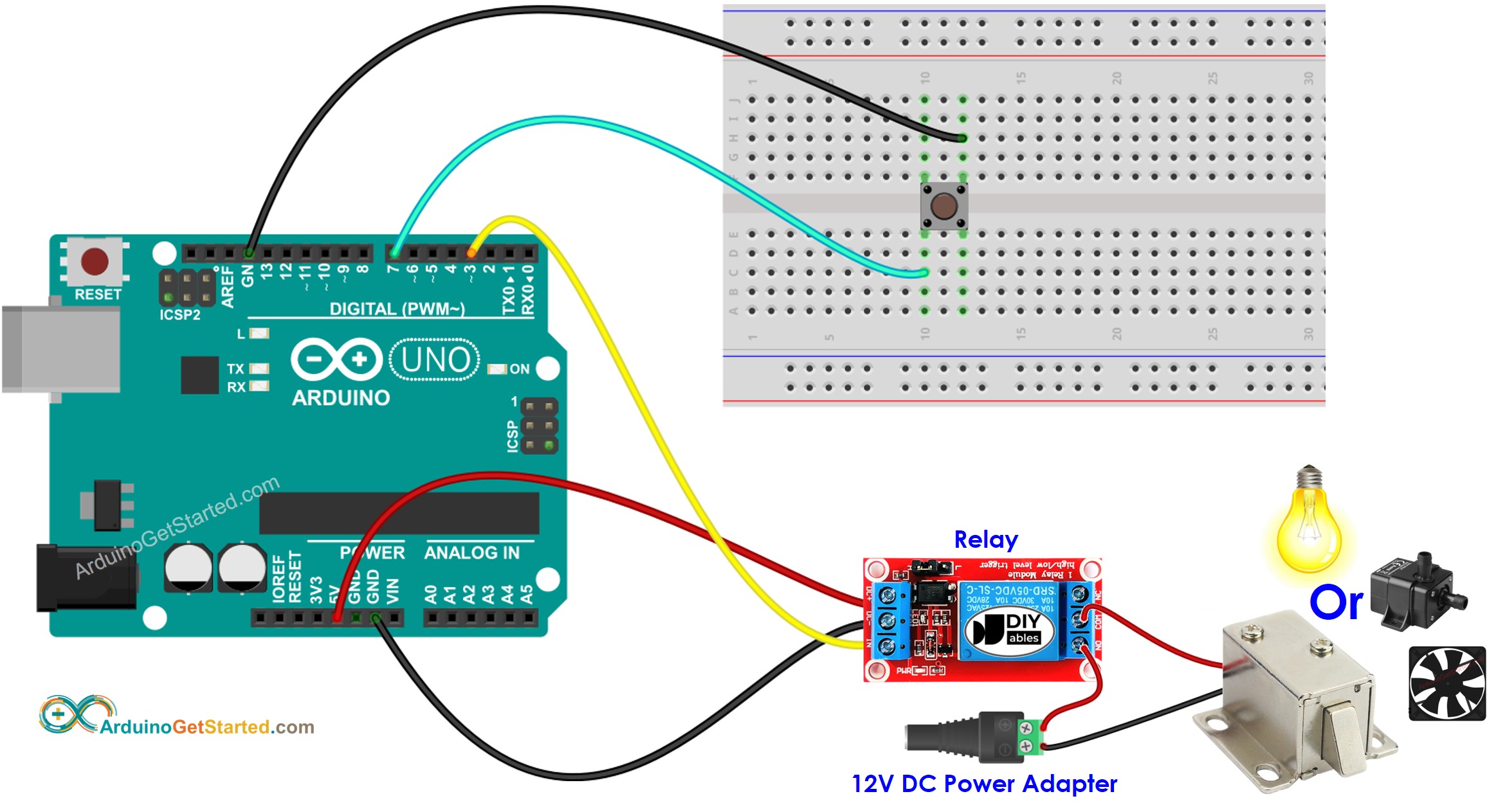

If(stateButton = HIGH & previous = LOW & millis() – time > debounce) Code for turning off a load with a relay & a button Arduino Relay CodeĪrduino relay switch code for turning on a load with a relay & a button /* sketch For instance, you should connect to 110 or 220V mains if you need a light bulb or fan otherwise, use another power source. The load in this instance has its own power source. The controller board, the transistor, and the relay must therefore be powered by an external power supply that ranges in voltage from 7V to 12V. Therefore, this is insufficient to turn on the relay and the LOAD. You cannot use 5V directly from the USB port in this case since the USB port typically only provides 100mA of current.

As a result, this transistor will activate the relay, which will then switch on the main power supply and power the load-like fan. Therefore, the major purpose of this voltage is to turn on the transistor. When the button is pressed, the Arduino board sets pin-2 to HIGH, which signifies that pin-2 of the board is receiving 5 volts. This circuit functions in two scenarios, such as switching a load on or off using a button or a relay. Arduino Relay circuit diagram Arduino Relay Operation The fan will turn ON after the button is pushed, and it will remain in that state until the same button is again pushed. The primary parts needed to make this circuit are the Arduino Board, 1K and 10K resistors, a BC547 transistor, a 6V/12V relay, a 1N4007 diode, and a 12V fan.
#Arduino relay board tutorial how to#
This circuit demonstrates how to use an Arduino to control a relay. The relay circuit operated by an Arduino is displayed below. If you are interested in arduino relay, you can look at the Electronic Part to see more information about it. Similar to this, there are several 3.3V-powered relay module kinds that are suitable for ESP8266, ESP32, and other microcontrollers. This relay module can be used with an Arduino because it can be powered by 5V. Relays come in a variety of varieties and are utilized in numerous applications. When using a low-power signal to operate an electrical circuit, relays are typically highly beneficial. Therefore, controlling a relay module using an Arduino board is relatively easy. Simply put, low voltage (5V) generated by the Arduino’s pins controls this relay. Simply activated by a low voltage, such as 5V, from a microcontroller, this electromagnet pulls a relay contact to connect or detach a high voltage-based circuit.Ī load is turned ON/OFF by an electrical switch, such as a relay, by allowing current to flow through it. A relay is actually a switch that is electrically activated by an electromagnet.


 0 kommentar(er)
0 kommentar(er)
